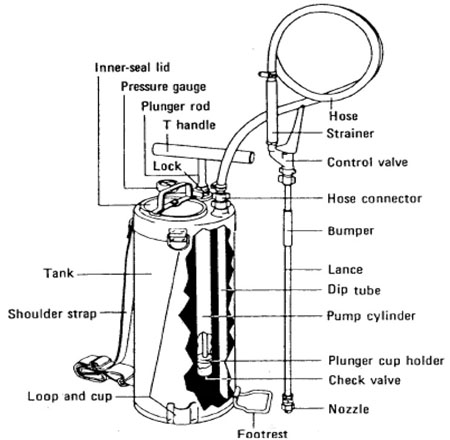10.4 Spraying requirements
Before spraying is undertaken, detailed information has to be collected on the number of households in the village, the number of unit structures (houses/rooms) in each household, the average surface area of every house in the village, and the season of malaria transmission. Effective insecticide spraying also requires trained personnel. In your case, the spray operators will be community members selected and recruited by you in consultation with your supervisor at the health centre. The spray operators will carry out spraying duties seasonally. Spraying equipment needs maintenance, and spare parts must be available. Box 10.1 lists the supplies and equipment used for IRS.
Box 10.1 Supplies and equipment used for IRS
- Spray pumps (Figure 10.1) of eight litre capacity
- Insecticides
- Spray pump spare kits
- Tool kits for pump maintenance
- Personal protective equipment (you will see a drawing of a spray operator wearing this equipment later, in Figure 10.6):
- coverall,
- waterproof hats or helmets,
- face shields or goggles,
- respiratory masks,
- gloves,
- rubber boots.

All these supplies and equipment will be provided to your health post by the District Health Office. They will make sure that you have everything you need before starting to train spray operators and beginning the spraying programme.
10.3 The IRS programme in Ethiopia
